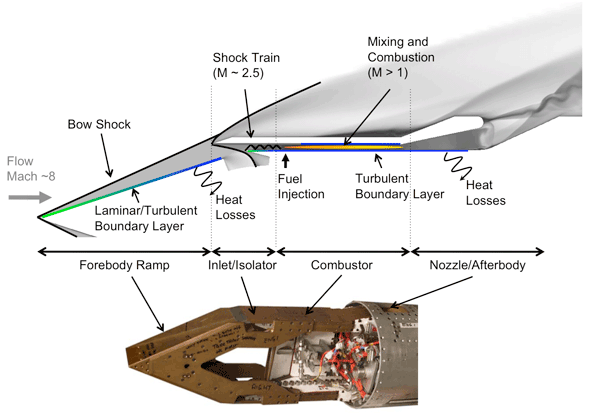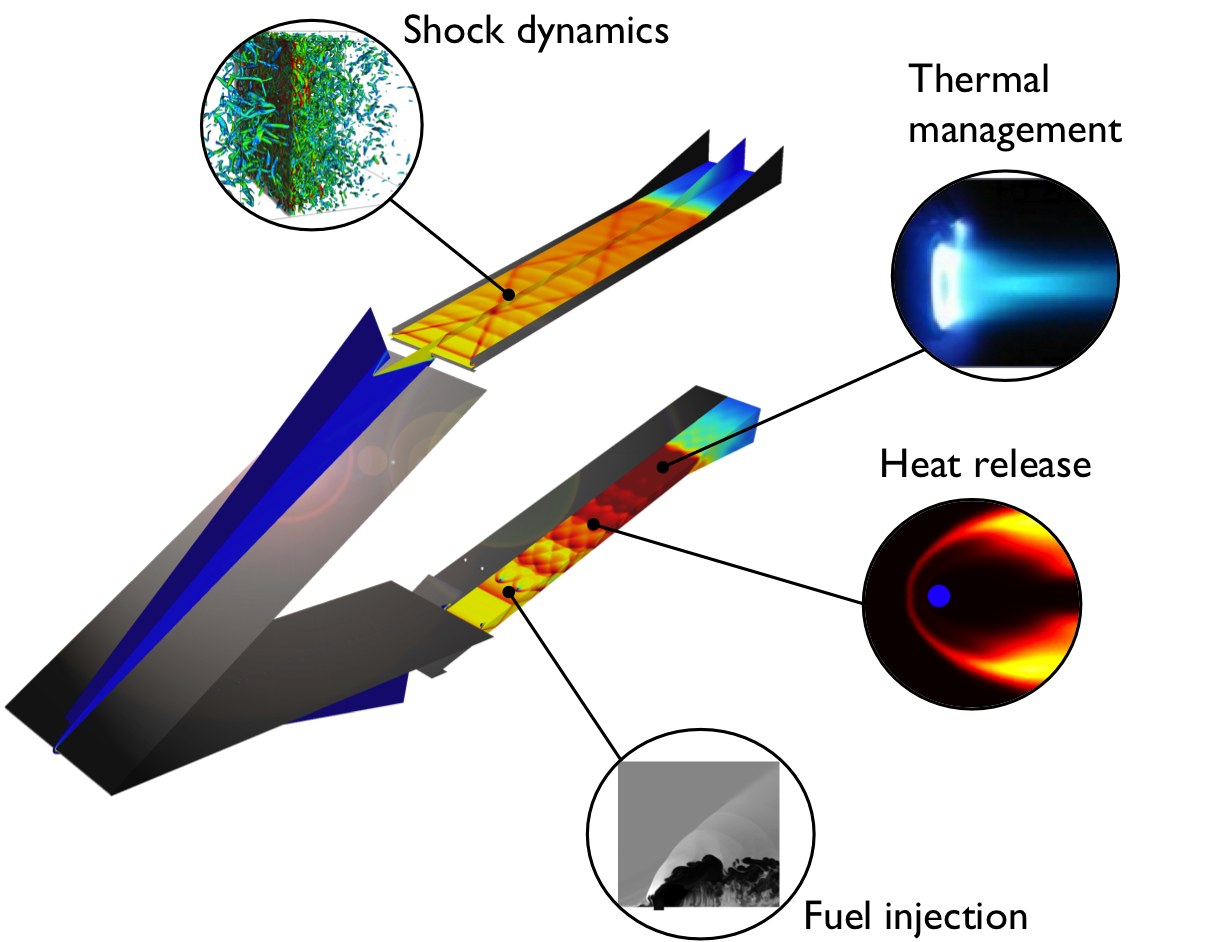| |
|
|
Research
| Hypersonic flight is intrinsically a multi-physics, multi-scale complex system where elements such as fluid dynamics, gasdynamics, turbulence, transport, chemistry, heat transfer and their interaction play a significant role. However, taking advantage of the hierarchical nature of this system, we are able to identify and decompose the full system into its unit components. This enables us to investigate in details, both numerically and experimentally, simpler unit-problem systems, advance their understanding, construct and validate physics-based models that accurately describe and predict them. All these activities are developed within a UQ framework that enables us to integrate and relate individual efforts.
|
| |
| Our different topical groups focus on one of such elemental systems (see below). They all consist in a modeling activity within our QMU framework and a parallel and simultaneous experimental support. The modeling aspects concentrate on developing and refining models to be used in our overall QMU activity, while the experimental activities focus on understanding the physics of the problem and providing opportunities for model validation. They are also sensitive to quantify the uncertainties in the work, and to identify and resolve sources of possible inconsistency between corresponding experimental and numerical efforts for a more systematic comparison of the results. |
|

Hierarchical decomposition of the HyShot II scramjet into its most fundamental unit problems.
|
|
| Physical modeling |
 |
Our modeling groups focus on 4 main areas of research:
The objective is to develop and improve component models to be used in the full system QMU analysis. |
| |
| |
| Experimental support |
 |
6 experiments are conducted in support to model development and QMU analysis:
- Shock/boundary layer interaction with uncertain boundary conditions
- Inlet unstart induced by jet injection
- H2/O2 kinetics
- Imaging of shock wave flows
- Reacing jet in supersonic crossflow
- TDL-based velocimetry and thermometry development
These experimental activities focus on understanding the physics of the unit problems and providing opportunities for model validation.
[more...] |
| |
| |
| Computational infrastructure |
 |
A new computational infrastructure has been developed to support the multi-physics and multi-fidelity simulation requirements of Stanford's PSAAP center. The infrastructure includes 3 key components:
- Reacting compressible RANS solver
- Parallel tools for managing UQ simulations and analyzing resulting data
- Reacting compressible LES/DNS solver
In parallel, the development of next generation programming environments is being pursued to adapt to new computer architectures evolving towards highly heterogeneous processors and deep memory hierarchies.
[more...] |
| |
|
|
|
|




